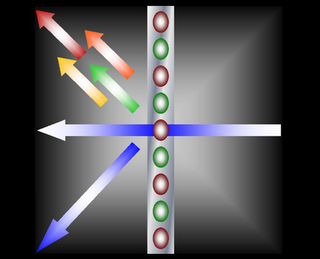 Parker has now received six injections of ADAGEN (PEG-ADA). We were all very surprised at how quickly Parker's numbers increased once he started the enzyme injections. His first complete blood count (CBC) after starting the PEG-ADA came back with an increase in his neutrophils, total white blood cells and lymphocytes. Each subsequent test displayed a continued rise in these numbers. I had mentioned earlier that once Parker's numbers reach a specific level he will be able to come home until we go to Italy. Unfortunately, his numbers will not be that high forever if we choose to stay on the ADAGEN and not go to Italy to take part in the Gene Therapy trial. As I have mentioned before, to be accepted into the study in Italy, the patient must remain on PEG-ADA for six months prior to taking part in the study.
Parker has now received six injections of ADAGEN (PEG-ADA). We were all very surprised at how quickly Parker's numbers increased once he started the enzyme injections. His first complete blood count (CBC) after starting the PEG-ADA came back with an increase in his neutrophils, total white blood cells and lymphocytes. Each subsequent test displayed a continued rise in these numbers. I had mentioned earlier that once Parker's numbers reach a specific level he will be able to come home until we go to Italy. Unfortunately, his numbers will not be that high forever if we choose to stay on the ADAGEN and not go to Italy to take part in the Gene Therapy trial. As I have mentioned before, to be accepted into the study in Italy, the patient must remain on PEG-ADA for six months prior to taking part in the study.The lymphocytes consist mainly of T-cells and B-cells and are made in the bone marrow. For Parker's form of SCID both the T-cells and B-cells as well as the NK cells are killed off by the toxins in his body. The T-cells are named that because they are matured in the thymus gland and then become one of three different types of T-cells. The B-cell mature in the bone
 marrow and then eventually secrete different antibodies in the presense of specific antigens (something that stimulates an immune response).
marrow and then eventually secrete different antibodies in the presense of specific antigens (something that stimulates an immune response).Now that Parker has started the PEG-ADA his lymphocytes have increased in numbers. Since the different lymphocytes look very similar under a microscope it is close to impossible to distinguish between the different T-cells and B-cells in a blood smear. To find out how many of the different lymphocytes Parker does have they do a test using flow cytometry. Parker is having this test completed today. If Parker has a substantial number of T-cells in his blood stream we will be able to take him shortly.
The flow cytometry test works as follows. The different cells in your body have specific markers or receptors on them. This test will check to see what receptors are present on a cell and record the number of cells with a particular receptor. How will be explained in the upcoming
 paragraphs. The next part may be a little scientific but a little bit of science never hurt anyone.
paragraphs. The next part may be a little scientific but a little bit of science never hurt anyone.The three types of T-cells are identified by the type of receptor they contain. Tc are incharge of destroying infected cells and contain the receptor CD8. TH are called helper T-cells and aid the rest of the immune system in fighting infection and contains the receptor CD4. Finally, regulatory T-cells aid in the supression of the immune system. These T-cells contain two receptors (surface proteins), CD4 and CD25. B-cells contain the surface protein CD20. These receptors allow for specific cells to bind to them.
The sample of cells that they take from Parker will then be mixed with specific antigens that bind to the different receptors. The antigens are coloured with specific dyes so that the receptors can be identified by the colours of the antigens that have bound to the receptors.
These cells (Parker's blood sampl
 e mixed with coloured antigens) are then places in a fluid which moves with the fluid past a light source of a specific frequency. Each cell in the sample is hit by the light source and absorbs some of the light of the controlled frequency. Almost spontaneously the cell re-admits lights of a different frequency. The frequency of light that is absorbed depends on the colour of the dye used on the antigens that are bound to the receptors.
e mixed with coloured antigens) are then places in a fluid which moves with the fluid past a light source of a specific frequency. Each cell in the sample is hit by the light source and absorbs some of the light of the controlled frequency. Almost spontaneously the cell re-admits lights of a different frequency. The frequency of light that is absorbed depends on the colour of the dye used on the antigens that are bound to the receptors.The flow cytometry test keeps track of the number of times each specific wave of light for a particular frequency was emmitted by a cell. By looking at the number of each admitted light wave, you can determine the number of cells of a particular type that are present in the sample. We are hoping to find quite a few T-cells as well as B-cells in Parker's blood sample.
1 comment:
Hey Parker,
Look at you and Daddy doing 'tummy time' together. I can just imagine what its going to be like for your Mommy when you get home. Your Daddy and you are always going to be playing pranks on her. The three of you will have soooo much fun. I bet she can hardly wait.
Stay Strong bit guy!
Love you tons
Nonna & Nonno
Post a Comment